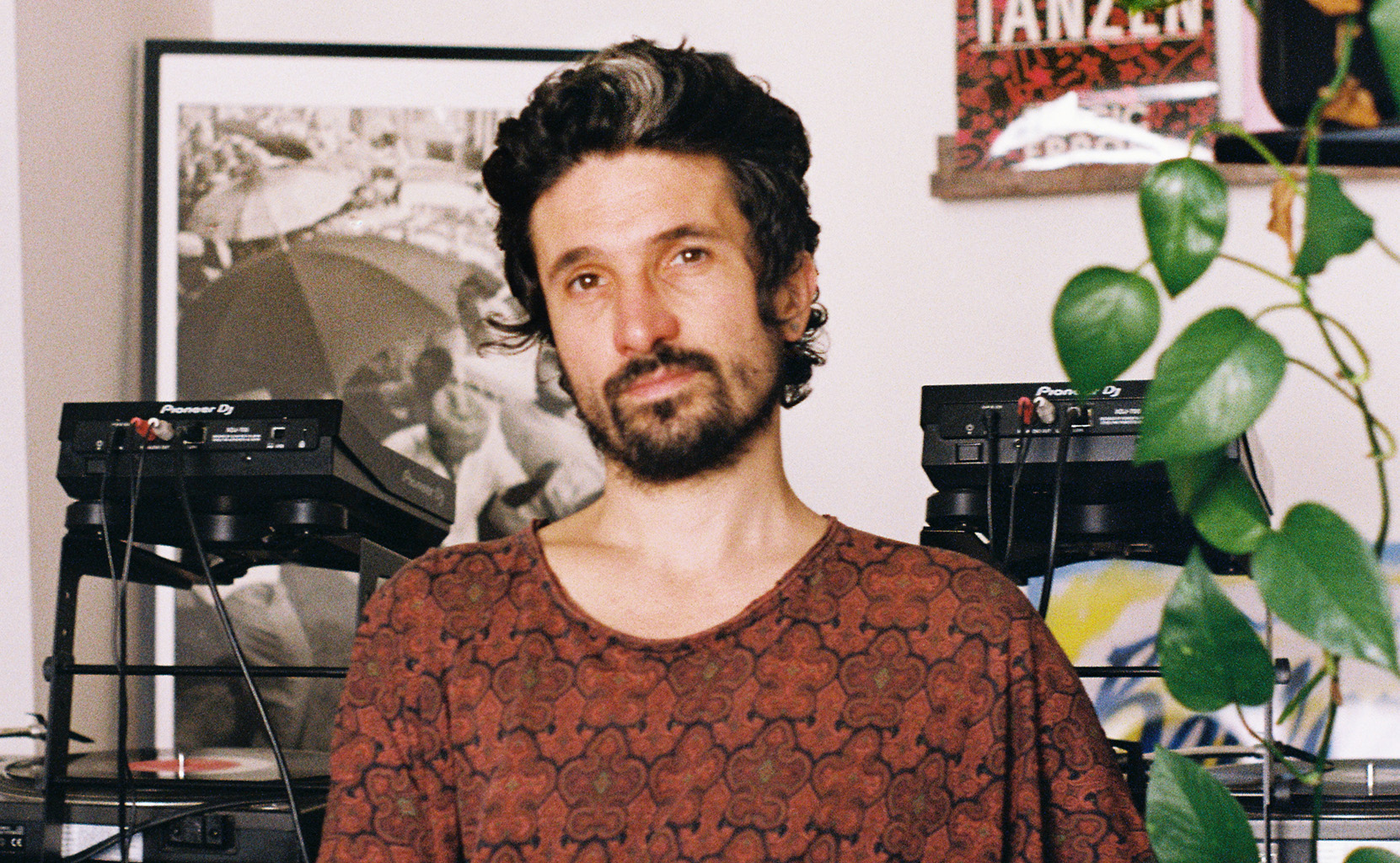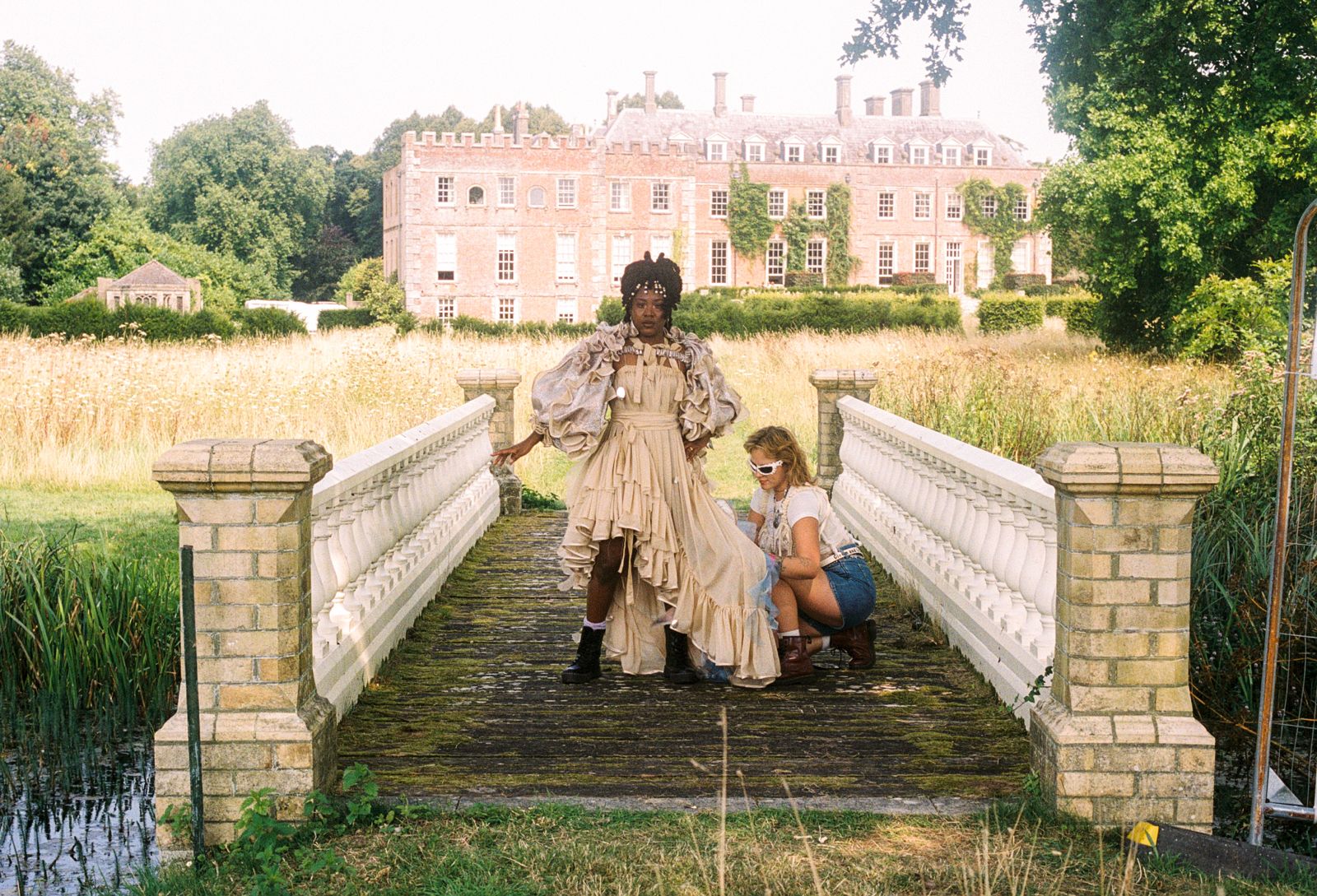
Style as Storytelling: Interview with Costume Designer Darja Gerova
Darja Gerova is a costume designer and style advisor, who has worked with artists from all over the world to craft unforgettable stage personas, using style as storytelling.
Raised in a creative family in Estonia, Daria spent her childhood immersed in the world of art—often backstage at theatres, concerts, and churches. After graduating from tailoring school, she moved to London to study fashion at London Metropolitan University and gained experience working at Selfridges, where exposure to designer brands expanded her perspective on style.
Drawn more to one-of-a-kind creations than commercial fashion, she began designing unique, often upcycled pieces—naturally evolving into costume design. Her work is rooted in storytelling and personal connection, especially within music and performance.
Now based in Barcelona, she focuses on costumes for events and custom orders, continuing to explore the endless possibilities of creative expression through costume.
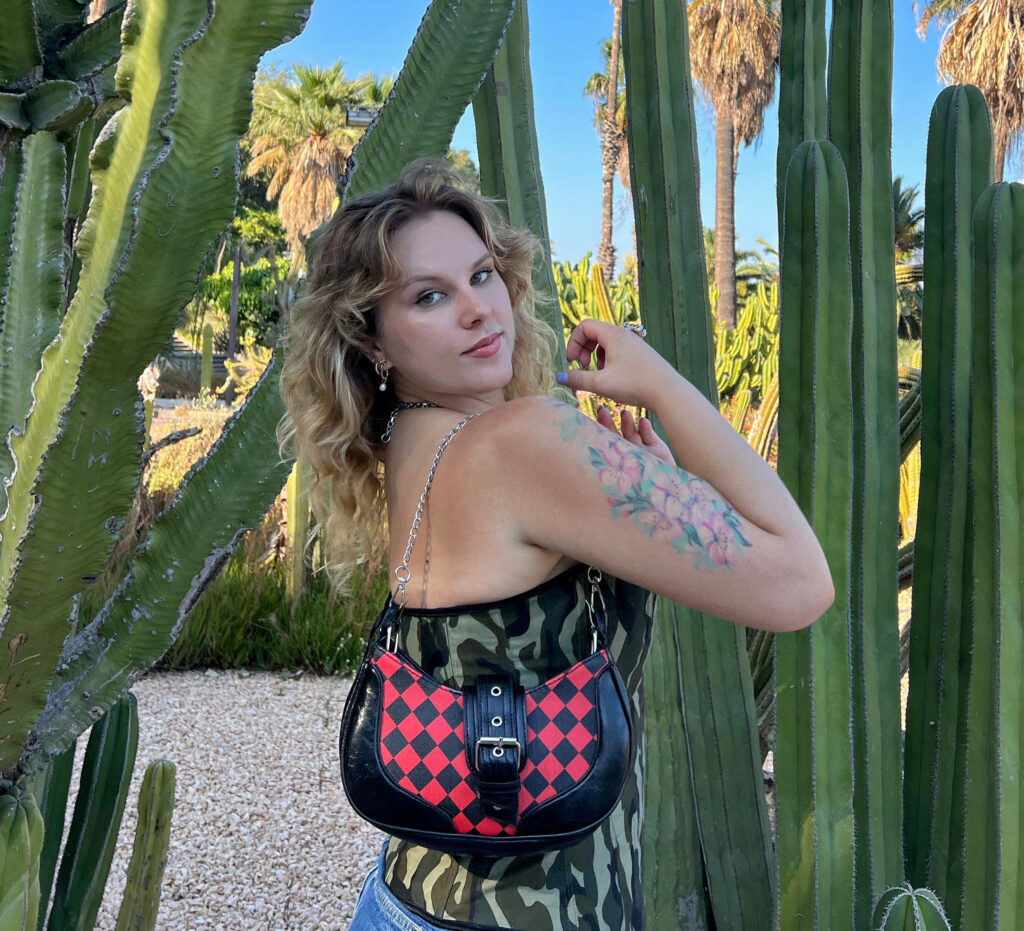
BACKGROUND + ROLE
// What inspired you to pursue a career in fashion and styling?
Darja: I moved to London to study fashion because I was searching for creative ways to express myself. Growing up, I spent a lot of time in the theatre – my parents worked there, so my childhood was full of dress-up, playful performances, and all sorts of fun, over-the-top celebrations. It was this world of creativity and transformation that first sparked my love for style.
When I was 16, I started working in luxury retail, and that’s when I really began to understand the power of fashion – how clothes can shape a person’s confidence, how they tell a story before you even say a word. Moving to London only deepened that passion. I spent six years working at Selfridges, surrounded by incredible designers, beautiful craftsmanship, and the energy of people finding pieces that made them feel like the best version of themselves. That experience taught me so much about the emotional side of fashion, and it’s shaped the way I approach style today.
// How did you break into the music industry as a stylist?
Darja: Since I started making my own clothes, storytelling has always been at the heart of my work. My mind never gravitated towards the commercial side of fashion – the kind of designs that need to be versatile and fit thousands of people. That’s what they typically teach you in fashion school, but I could never create like that. Every piece I made was crafted with intention, unique in its own way, and often impossible to replicate.
It didn’t take long for me to realise that the people drawn to my work came from the music industry. Just like me, they weren’t looking for mass-produced fashion; they wanted something one-of-a-kind, something that could bring their music to life visually. Whether for performances, music videos, or press shoots, they needed pieces that told a story, reflected their artistry, and felt like an extension of their sound. That’s how I naturally found my way into styling for musicians – it wasn’t a planned path, but rather a creative alignment that just made sense.
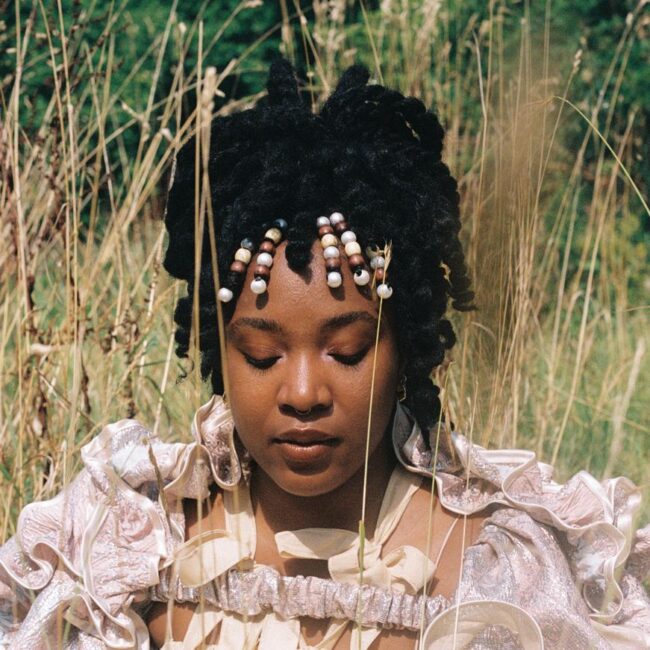

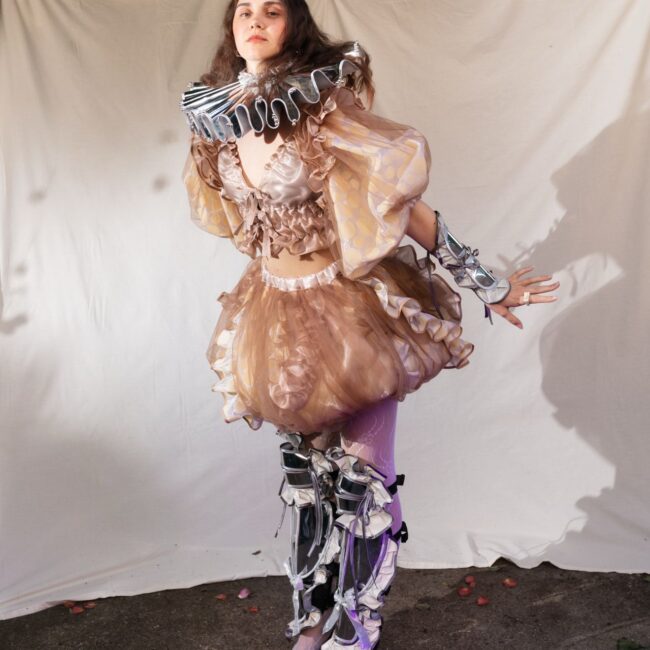
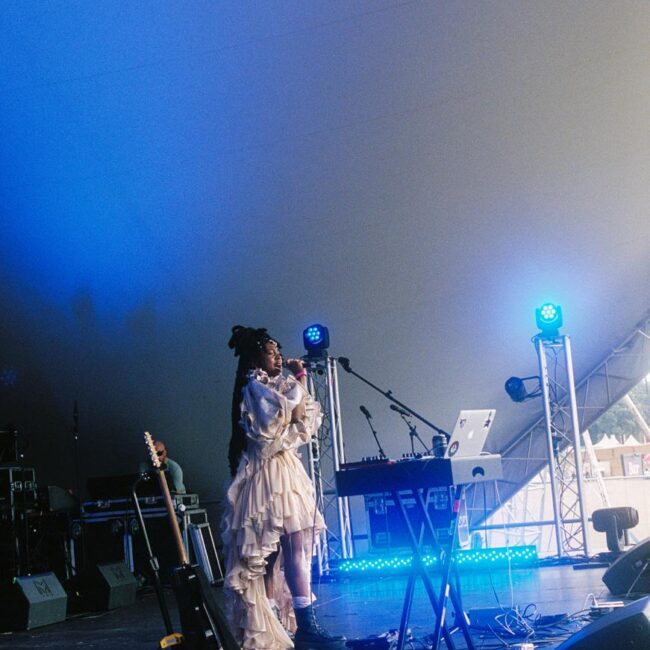
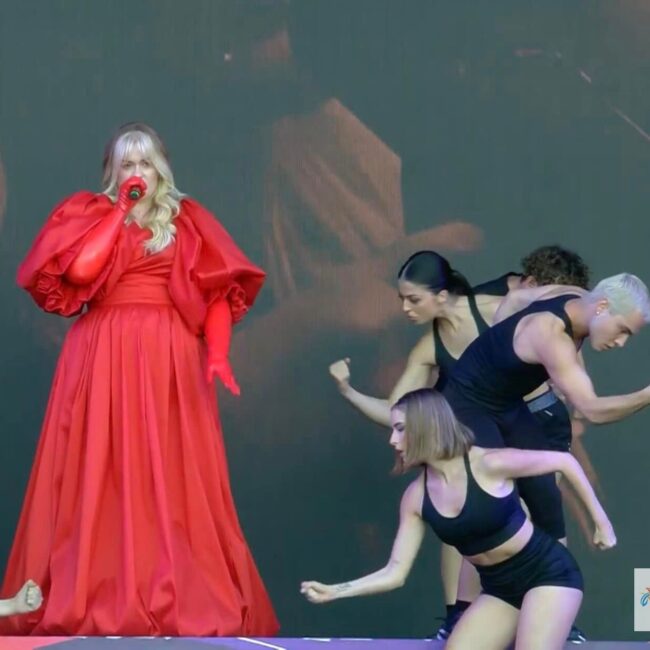
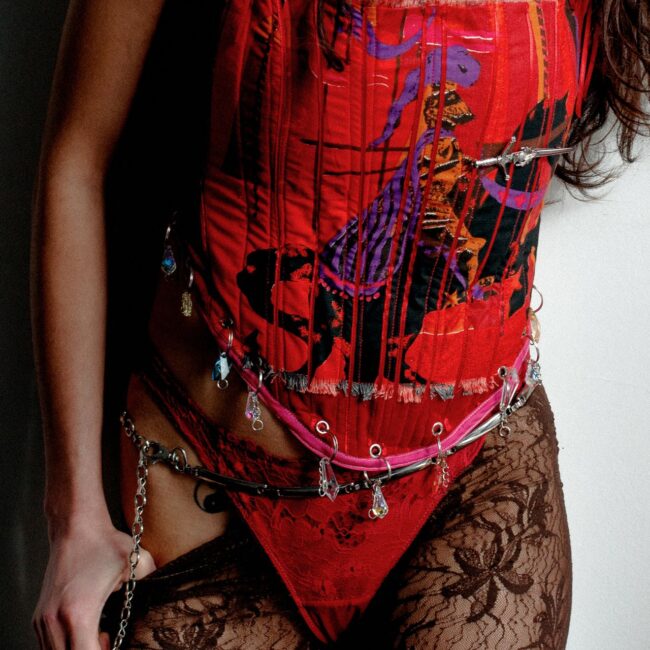
MUSIC INDUSTRY
// How does working with musicians differ from working in other fashion industries?
Darja: Working with musicians is a completely different experience from other areas of fashion because there’s often a much stronger narrative thread that runs through everything – the music, the lyrics, the videos, the visuals, and of course, the styling. It’s not just about making someone look good; it’s about crafting a world that feels true to the artist, something that visually extends their sound and identity.
For me, the most exciting part is creating something that feels deeply personal, a reflection of the artist’s inner world. When styling is done right, it becomes more than just an outfit – it’s part of a bigger, immersive experience that connects with the audience on a different level. Every little detail, every carefully chosen piece, has the potential to reinforce their vision, turning their creative universe into something coherent, exciting, and almost cinematic.
Fashion, in general, often takes inspiration from what already exists, repurposing and reinterpreting ideas to create something visually appealing. But in music, styling can go beyond that – it becomes a portal into an artist’s mind, a bridge between their sound and the way they want to be seen and remembered. That’s what makes it so special.
// How does an artist’s style contribute to their overall brand and identity?
Darja: Artists are often seen as storytellers – people who bring hidden narratives, emotions, and ideas to life in ways that others might not notice in everyday life. Their style plays a crucial role in this storytelling, acting as a visual extension of their music and message.
In my opinion, an artist’s style can either amplify their vision or work against it. When done right, it becomes another layer of communication, reinforcing their identity and making their presence even more impactful. A strong visual identity helps an artist stand out, making them instantly recognisable and adding depth to their persona.
With the right balance of music, lyrics, visuals, and personal style, an artist can craft a world that feels immersive and authentic. Whether it’s through bold statement pieces, carefully curated silhouettes, or signature looks that evolve over time, their style becomes part of their legacy. It’s not just about looking good – it’s about embodying their artistry in every possible way.
CREATIVE PROCESS
// Where do you draw inspiration from when styling musicians?
Darja: My biggest inspiration is always the artist themselves. Every musician brings their own unique puzzle of narratives, influences, and personal biases, which makes the process of working with each one an entirely different experience. No two artists are the same, and that’s what makes it so exciting – each collaboration is a new world to explore.
As a costume designer and creative visionary, I naturally bring my own knowledge, aesthetic, and personal touches into the process. I want my pieces to not only suit the artist but also carry a recognisable signature of my work. The challenge is to create something that reflects both their world and mine – something that feels like an extension of their artistry while staying true to my design ethos.
I love working with contrast and complexity. Artists, like all people, aren’t one-dimensional – they have layers, contradictions, and endless stories to tell. That’s why I craft looks that embrace juxtaposition, mixing different textures, silhouettes, and elements to create something dynamic. Fashion, in my view, should never be one-note. It should evolve, reveal different sides of a person, and contribute to the story they are telling. That’s why I like to describe my work as maximalistic – because life, identity, and music are all about depth, and clothes should reflect that too.
// What’s the process of creating a signature look for an artist?
Darja: It starts with a conversation. We talk about what they feel is missing, their ambitions for their journey, and their personal likes and dislikes. Sometimes, artists have a clear vision, but often, they don’t fully know what they want – just that they’re searching for something that truly represents them. That’s where the real work begins.
Through a series of meetings, mood boards, and creative exploration, we start piecing together those answers, experimenting with different elements until we land on something that feels like an authentic extension of their artistry. It’s a collaborative process, and the best results come when we allow space for discovery.
// How do you approach styling for different types of projects, such as music videos, live performances, and red carpet events?
Darja: The approach to styling always depends on the artist and their ambitions. Some artists have bold, playful personalities and want to challenge traditional norms of dress codes, pushing boundaries and making a statement no matter the occasion. Others might take a more refined approach, meaning we have to work within the expectations and unspoken rules of certain events while still ensuring their individuality shines through.
For music videos, the styling is all about storytelling – it needs to enhance the visuals, match the energy of the song, and often allow for multiple outfit changes to create contrast and depth. Live performances require looks that are both impactful and practical, ensuring the artist can move freely while still commanding attention on stage. Red carpet events, on the other hand, come with their own set of rules, but the challenge is always to find a way to reinterpret those expectations and make them feel personal to the artist. No matter the project, the key is always to balance creativity with functionality, making sure the look not only stands out but also feels like an authentic representation of who they are.
TRENDS
// Are there any common fashion mistakes musicians make when trying to create a signature look?
Darja:That’s an interesting question because, rather than just focusing on musicians, I think it applies to people in general. In a world where marketing campaigns, shop windows, and dressed-up mannequins dictate what we should wear, many have lost touch with the idea that clothing is a form of personal storytelling. Instead of dressing for themselves, people often end up dressing like what they see in front of them – choosing looks that have already been curated for the masses.
Fast fashion and so-called “trends” are designed for broad appeal, but true style is about individuality. This is especially important for musicians trying to build a signature look. The biggest mistake artists make is letting trends dictate their image rather than using fashion as a tool to tell their own unique story. Before choosing an outfit, whether for a performance, a video, or daily life, I always encourage people to approach fashion with critical thinking. Ask: Does this represent me? Does it connect to my story? Or am I just picking something because it’s there?
Avoiding curated, pre-packaged “looks” and instead experimenting, mixing, and layering pieces that truly reflect who you are will always result in something far more original – and that’s the essence of a real signature style.
// How can musicians stay true to their personal style while embracing fashion trends?
Darja: By tapping into their own story – asking themselves, what am I really trying to say? It’s about looking at the world around them: the people, the places, the traditions they’ve grown up with or chosen to be part of. Some may wish to honour these roots, others might feel the need to break away from them – either way, there’s always a reason behind it.
When fashion trends come along, they don’t have to replace that story, but can be filtered through it. The key is to make choices that reflect their inner world – letting the music, the style, and the self all speak from the same place.


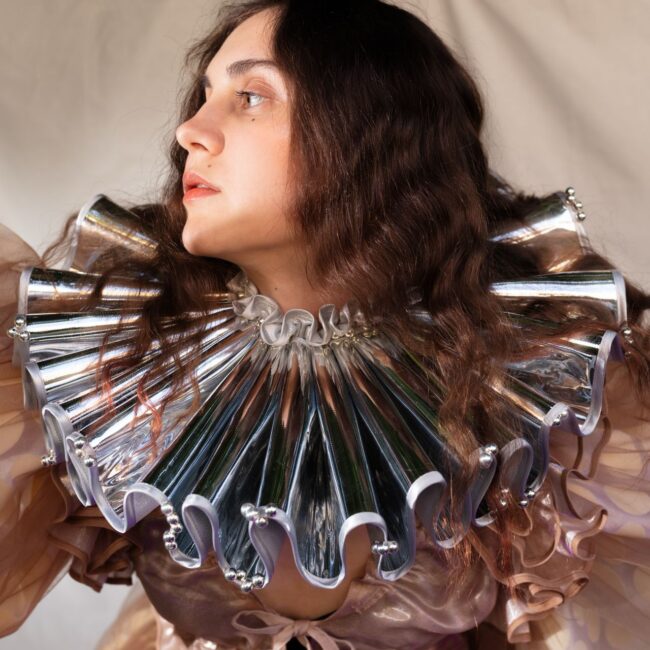

PERSONAL + PROFESSIONAL INSIGHTS
// Have you ever had to convince an artist to take a risk with their look? How did it turn out?
Darja: That’s an insightful question, and yes, it’s something I’ve encountered practically all the time. Artists often struggle to seamlessly merge their deeply personal music and inner world with their public visual identity.
Convincing someone to step outside their comfort zone is always a significant challenge, so the journey can certainly be a bit bumpy, and it’s rarely “love at first sight.” However, in my experience, the results of taking that leap of faith are consistently rewarding.
// What’s the most rewarding part of working as a stylist in the music industry?
Darja: The most rewarding part of working as a stylist in the music industry, for me, is undeniably seeing the work directly on stage. That’s when the phrase ‘trust the process’ truly comes alive. Whether you’ve been meticulously preparing something for a month, conducting countless fittings, or even just taking detailed photos out of context for a client, the moment it all comes together on stage is unparalleled. The combination of the light, the sound, and the live stage environment brings all those individual dots together, and that’s when the real magic happens. Sometimes, it genuinely gives me chills, and I just embrace that ‘that’s why I do this’ moment.
// If you could style any musician, past or present, who would it be and why?
Darja: If I could style any musician, past or present, a true icon for me would definitely be Björk. It’s because I believe she already completely owns her aesthetic; she is truly one-of-a-kind and unique. Her vision and outlook are so out of this world that I would honestly just love to be around her and learn from her – to watch her flow, see where she draws her inspiration from, and understand how she transforms it into her incredible visual presence.
From my more recent discoveries, I’ve found myself completely fascinated by Ecca Vandal. I absolutely adore her latest music and visuals; she really brings out that good old-school punk rock kid in me and reminds me of my inner rebel teenager. I’d absolutely love the opportunity to experiment with her look.
ADVICE FOR MUSICIANS
// What’s the first step a musician should take when defining their style?
Darja: That depends on how they process ideas. Some people are more visual, others work better with text. So why not treat it like a bit of creative homework – much like something you might’ve done at school, but with more freedom?
If you’re visual, try building a mood board or collage. Gather images, textures, colours, and references that speak to you – even the things you don’t like can be just as telling. Over time, patterns will start to emerge, creating a visual story of your authentic world.
If you prefer working with language, write it out. Start with words that resonate – maybe “disruption”, “melancholy”, or “ritual” – and map out all the associations that come to mind. It’s a way of uncovering the themes and ideas that feel most true to you, which can then shape not only your music but how you present it to the world.
// How can emerging artists create a strong image on a budget?
Darja: You can absolutely cultivate a striking image on a tight budget. The re-emerging trends of thrifting and second-hand shopping are a game-changer, genuinely helping us stay authentic to our true selves without having to spend big amounts on designer pieces. Sure, not everyone feels comfortable entering a huge warehouse with mountains of clothes to unearth something special, but trust me, that’s often where the true gems are hiding – you just have to have your “gem radar” up and rolling.
The same goes for online platforms like Vinted; it might feel like a little more commitment to scroll through and find something unique rather than heading to shops where your “looks” are already curated for you, but that’s precisely what makes you genuinely stand out from the crowd.
// What are some key wardrobe essentials every musician should have?
Darja: I honestly don’t know how to answer that with a prescriptive list, as I’m a true believer in authentic style. There genuinely isn’t a “one glove fits all” solution when it comes to wardrobe essentials for musicians. That’s precisely what high street fashion often dictates to us – a constant stream of “must-have” fashion trends, a “everyone should have this” type of mentality, which ultimately stifles individuality.
My biggest piece of advice, then, is to not look for ready-made stamps or dictated trends. Instead, simply keep adding pieces to your wardrobe that genuinely speak to you in the most random moments of your life. Those truly unique items usually just find you, whether you’re on holiday or browse a random flea market.
// How can musicians use style to stand out in a crowded industry?
Darja: As I always tell my friends who are in the music industry or are up-and-coming performers, their style is essentially a story that people fall in love with. At the end of the day, it’s always about marketing and how effectively you present yourself. In this world brimming with distractions and information noise, the winner is often the one who is able to “scream louder” amongst the already screaming crowd.
Now, that’s not to say that people who dress “boring” are bad artists – not at all! Sometimes I’ve encountered the most beautiful artists who quietly play a guitar among a closed circle of friends somewhere on the beach. But from a purely commercial perspective, you really have to own your image from top to bottom to create a unique synergy between your music, your style, and your overall visual presentation. Because those unique images truly draw people’s attention – it’s like a magnet that works powerfully.
// What advice would you give to musicians who feel unsure about their fashion identity?
Darja: Never stop experimenting. Think of it like going on many “bad dates” until you finally find the right one that clicks. From my personal experience, I can literally pinpoint different phases of my life based on how I dressed – constantly changing my hair color from pink to black, ginger, and blonde, and trying on wildly different styles. This was all because I was always experimenting.
Can I say I’ve found “my style” now? Absolutely not! Because every day I wake up feeling different, and that’s perfectly normal. That’s what authenticity looks like; we’re not meant to wear uniforms. So, just don’t try to fit into the mold this world presents. Feel the blessing of being free and experimenting. And at the end of the day, remember – it’s just clothes! 😉
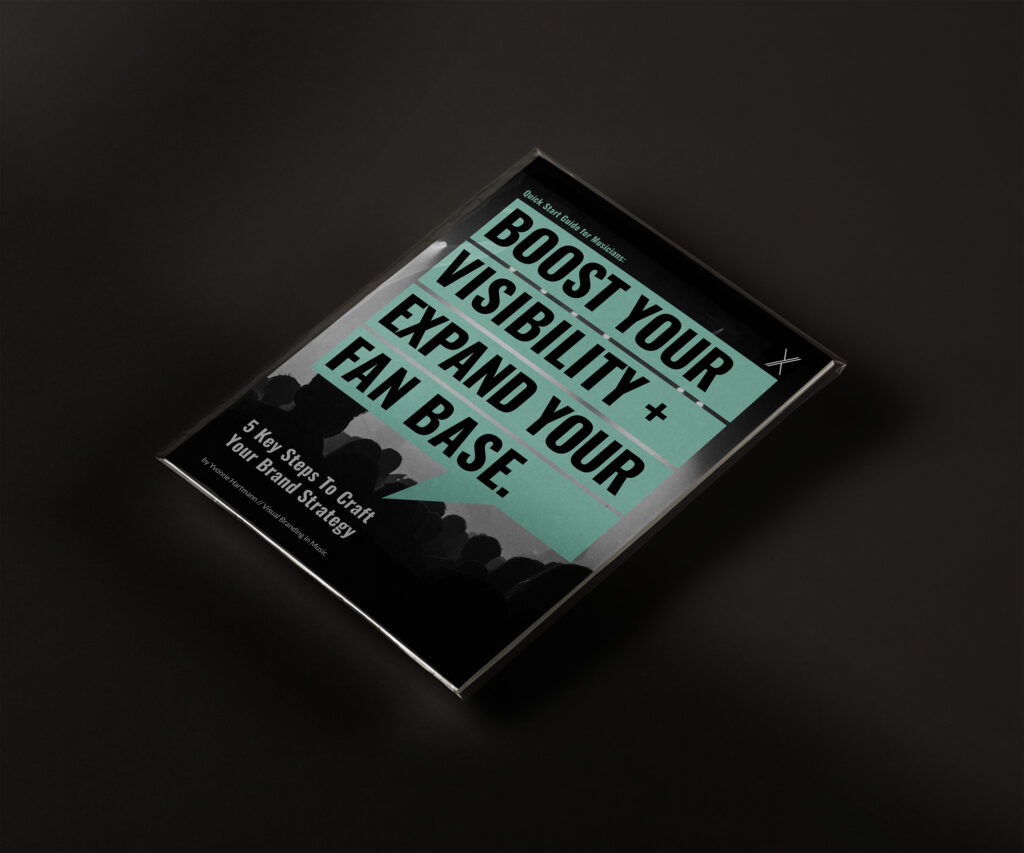
Want More Branding Secrets?
Stay Tuned & Level Up Your Music Career!
Loved these branding tips? There’s more where that came from! Get started today with my FREE guide: “5 Key Steps to Craft Your Brand Strategy”—plus, join my newsletter for fresh branding tips straight to your inbox.




